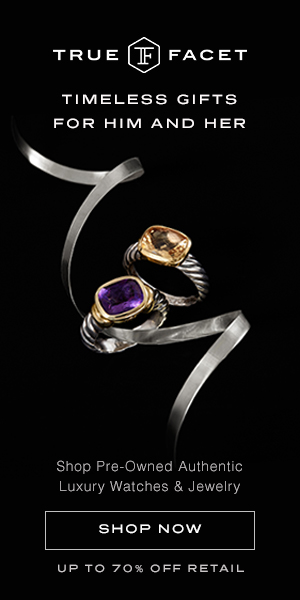5 Things You Didn’t Know About Fine Jewelry Auctions
Jewelry auctions—with their staggering price tags, hot bidding wars and impressive bejeweled lots from royalty like Wallis Simpson and big-name celebrities like Elizabeth Taylor—seem very private and removed from the average person.
However, we’re also fascinated and curious to know what exactly goes on at one of these dazzling jewelry auctions. Here we share five surprising things you may not know about fine jewelry auctions.
1. Anyone can attend an auction. For free.
Surprisingly, auctions—even auctions at ritzy auction houses like Christie’s, Sotheby’s and Phillips—are entirely open to the public and free. However, there are certain high-profile and evening auctions that do require a paid ticket.
If you plan on bidding at the auction, you will need to register, sometimes a day or two in advance of the auction. Registration fees and proof of ID vary from auction house to auction house with some requiring a financial reference or a deposit as a condition of allowing you to bid.

Sotheby’s Auctioneer (Image courtesy of Sotheby’s)
2. It’s really hard to become an auctioneer.
Being a live auctioneer is stressful and demanding work, and, because of the job’s intensity, the pool of working auctioneers is rather small.
To get your foot in the door, there are local auctioneering schools. But big auction houses like Christie’s offer an exclusive auctioneering school that invites only 41 potential auctioneers every two years to join their program. Ultimately only two to three students graduate from the rigorous program.
At auctioneering schools, students are groomed to be compelling masters of ceremonies and perfect their bid-calling, which is their keen ability to get bids rolling in, get the crowd involved, and speak clearly while keeping up the high energy of a live auction.
Most auctioneers are paid on commission based upon how much a collection brings in. However, other auctioneers charge a flat-rate for their services. The National Auctioneers Association (NAA) estimates the average part-time auctioneer makes $46,000 a year.

Christie’s senior jewelery specialist Daphne Lingon inspects a Harry Winston necklace. (Image courtesy of Christie’s)
3. Each lot sells in 2-3 minutes on average.
Given how much money bidders are about to drop on a piece of jewelry, you would think the lot would spend a bit more time gradually working up to that final winning bid. But, surprisingly enough, each lot is on the auction block for 2-3 minutes before it’s sold or bought in. (Thanks in large part to the speed-talking auctioneers who rapid-fire repeat bids to keep the event lively and engaging.)
In fact, the longest bidding war in auction history lasted a mere 16 minutes. Two bidders fought over Andy Warhol’s Self-Portrait painting at a 2011 Christie’s auction, which was ultimately sold to a European caller who bought the piece for a cool $38 million.
4. Bids usually increase in 10% increments.
Although it’s up to the auctioneer’s discretion, most auctions prompt bids in 10% increments. It’s crucial for a good auctioneer to quickly calculate those percentages and increases in bids while keeping up the energy and urgency.

Sotheby’s Auction (Imager courtesy of Sotheby’s)
5. If you win, you’ll pay more than the “hammer price.”
We’re all usually left reeling thinking about the Cartier Tutti Frutti bracelet that sold for $2.1 million dollars (double its high estimate) or the rare Oppenheimer Blue Diamond that went for a staggering $57.5 million.
That is a big chunk of change—but that’s not all the winner will have to spend.
Atop the “hammer price,” auction winners will have to pay a hefty “buyer’s premium,” a commission paid to the auction house. Commission rates are calculated per lot, but average to 20-25% of the “hammer price,” with a sliding scale for lower commission rates for lots that sell for $100,000 or more. Oh, and let’s not forget about local sales tax, too. In total, winners will shell out even more than the impressive dollar amounts published in the headlines.







